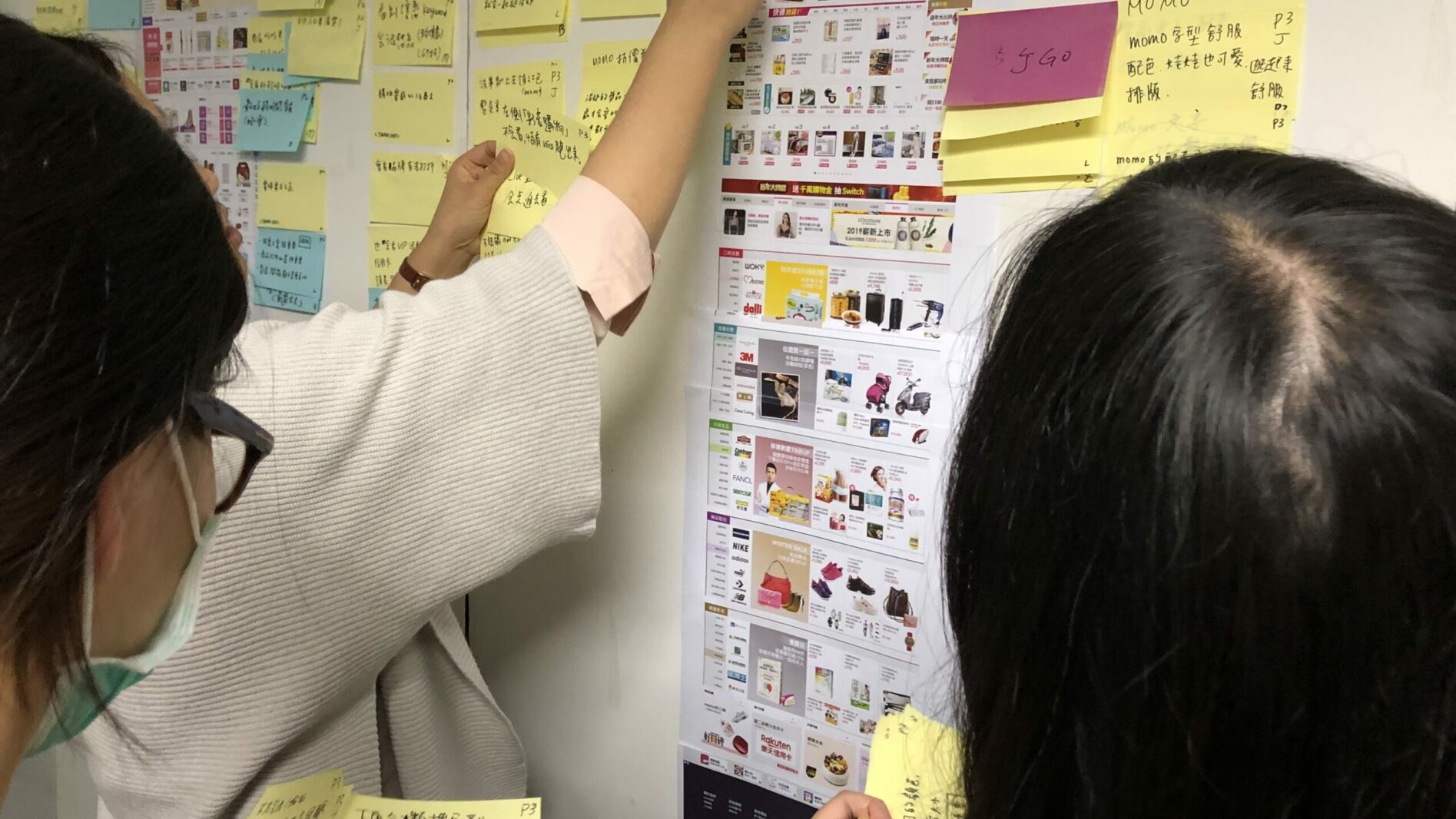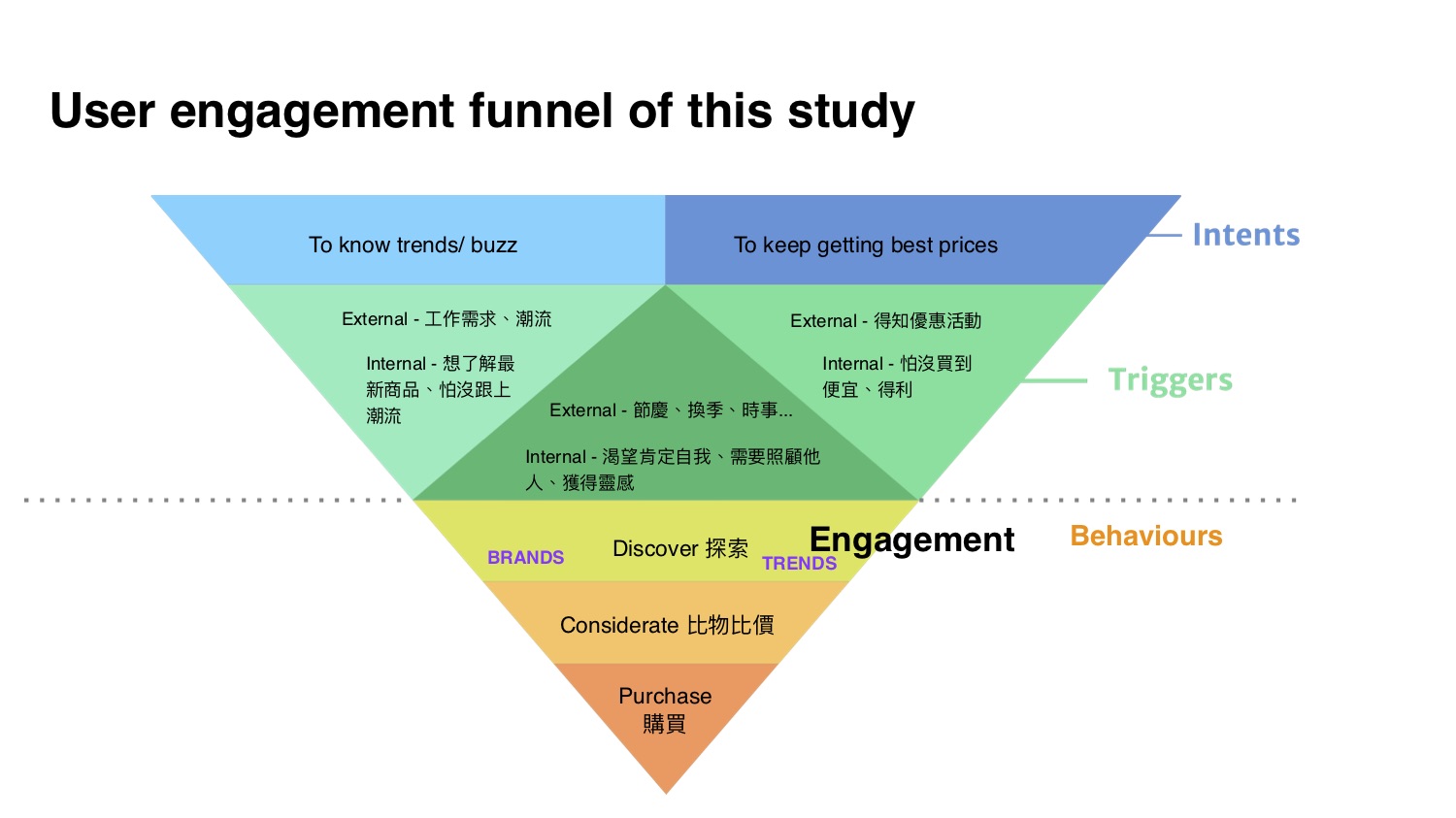At the moment Yahoo was planning to streamline their e-commerce business and transform it into social commerce, I led the team to build up new user experiences for the Yahoo Shopping And Store (SAS) platform which integrates B2B2C Yahoo Shopping and B2C Yahoo Store.
The project included two milestones – first the newly positioning of the SAS; second the definition of target user profiles, leading the project involved the communication between many stakeholders, designers, project managers and a researcher.
The study results were promising, assuring Yahoo to roll out the new SAS frontpage; social shopping activities together with different user segment profiles were therefore scheduled in the development pipeline.
Project objectives
Yahoo was aware of the competitive e-commerce economy in Taiwan. In order to sustain traffic and grow transaction, Yahoo aimed to merge their two platforms – Yahoo Shopping (https://tw.buy.yahoo.com) and Yahoo Store (https://tw.mall.yahoo.com) into Yahoo SAS and further introduce social commerce, the augmentation of commerce with social media.
The goal of the project correspondingly was to consolidate core social commerce values of Yahoo’s new platform and to validate the new frontpage and design modules through an analysis of target audiences.
My role & responsibility
As researcher lead in the product department, I led the studies from planning to execution except recruiting which was outsourced. To align the project scopes and milestones, designers and I worked as a team on a daily basis, talking to stakeholders and project managers frequently.
Process
User study of new Yahoo SAS brand perception
Conduct 1-on-1 interviews and synthesise data
Brand validation
Present engagement model and validate design prototypes for new branding
User study of social shopping
Execute in-depth interviews to understand social shopping behaviours and test design modules
Persona creation and user feedback of ideas
Create shopper personas and summarise users’ feedback on our social shopping design ideas
User study of Yahoo SAS perception
Conduct 1-on-1 interviews and synthesise data
With the three core brand values “Trends, Brands and Smart”, the SAS positioned to offer more engaging shopping experience, encouraging shoppers to visit more frequent and stay longer. In oder to validate the new positioning, six participants who had desirable traits of Yahoo SAS users – three savvy social shoppers from competitors and three Yahoo Shopping heavy users – were recruited for 1-1 interviews.


After interviews, I facilitated clustering notes of observers (stakeholders) across all interview sessions and analysed them.

Brand validation
Present engagement model and validate design prototype
An engagement user funnel was presented to state six participants’ mental models after analysis, in which “Discover” was addressed in accordance with Yahoo SAS brand positioning of engaging users with brand drivers “Trends, Brands and Smart”. That said, social shoppers who have stronger desires to discover the platform could have several intents and triggers. To understand this can help us strategise the contents and enhance functionality to nudge shoppers to stay. For example, the key words of product categories provide shoppers new ideas of shopping; the search bar plays a role of FAQ, answering what shoppers can purchase.

In the interview, participants were invited to evaluate the prototype of SAS frontpage by executing given tasks. At the end of operation, they have been given product reaction cards to assess intangible aspects of UX. The The overall user perception of Yahoo SAS frontpage design was then compared with the defined brand drivers:

Next to brand perception, user feedback of the interface experience – including which section was encouraging them to discover; which section was not; together with uncovered issues, such as unclear product categorisation and personalisation, which consequently could be improved, was gathered.
In general, our design assumptions including top bestseller lists, recommended brands and products as well as product previews by categories are aligned with users’ feedback. They got stronger interests in discovering new stuffs on SAS. Yet, video contents and latest promotions did not work as expected because of lack of prediction and customisation.
User study of social shopping
Execute in-depth interviews to understand social shopping behaviours and test design modules
To explore possibilities of social shopping design ideas and test our proposed ideas which are happening on mobile, four savvy social shoppers and three Yahoo heavy users were invited to record their shopping experience and then joined the in-depth interview. All raw data was sorted and synthesised immediately afterwards.


Shopping modules tested in the user studies

Persona creation and user feedback of ideas
Create shopper personas based on user findings
In addition to finding shopping behavioural patterns including shopping stimulus, triggers, and loyalty development, I created a map of shopper activities, on which all activities from participants were clustered and four types of shoppers were modelled. This map, essentially, offered a guidance of social commerce interactions.

Summarise users’ feedback on our social shopping design ideas
I was meanwhile collecting feedback on design modules which were intended to enhance user engagement. The results showed: the overall impression of the design was attractive and interesting. Among the participants, inspiring features such as Selected Store, Topic Blog and Combo Stylebook were most favourable, while Multiple Tags and More Themes distressed them due to difficult understanding. The results therefore clearly pointed out which idea was good to be iterated for augmenting shopping experiences, with the reference of the activity map.

Results and Impacts
New brand of platform is positioned and launched
Based on two milestones’ results, Yahoo SAS kept the brand positioning and adjusted the parts of the frontpage and modules which were not preferred by participants and then launched the design. Below is the site but due to the legislation, it requires to be in Taiwan to browse.
Social engagement is on the way
Social engagement, on the other side, required longer business planning. More diverse social activities, trend-leading contents and topic pickups were followed up by the activity map already included in the yearly curation plan.








